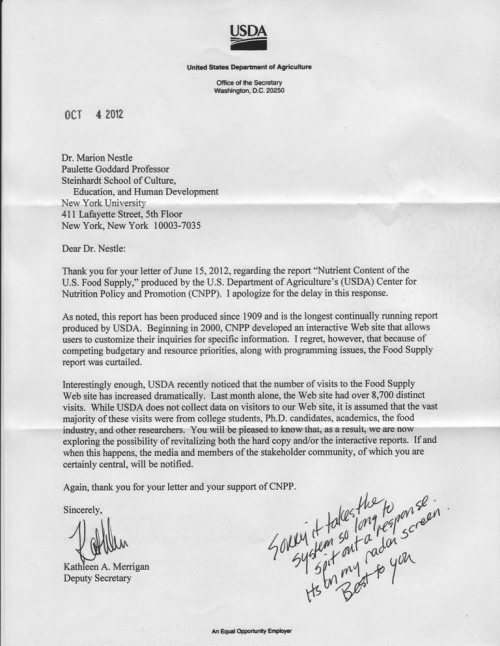This session is on Practicing Food Studies. It will be at 5;00 p.m. Details to come.
Why isn’t USDA keeping up its series on calories in the food supply?
In November 2011, I wrote about my frustration over the USDA’s discontinuation of a data set it had published continuously since 1909: Nutrients in the Food Supply. For unfathomable (to me) reasons, USDA stopped the data set in 2006.
For decades—since 1909—USDA has converted information about food availability (the amount of food produced in the U.S., less exports, plus imports) to per capita nutrient availability in a continuous series (it also publishes data on calorie intakes from certain foods).
This is the data set I use to explain how calories in the food supply have increased to today’s 3,900 per person per day from 3200 in 1980—an increase of 700 calories per day in parallel with rising rates of obesity.
USDA stopped this series in 2006. It now only publishes calorie supply figures that have been adjusted for waste.
When I wrote USDA to ask whether more recent data were available, here’s what I got back (in its entirety):
Because of other project priorities the Food Supply project has been curtailed. There are programming issues to which we haven’t been able to devote available resources.
In July this year, I wrote letters to everyone I could think of at USDA who might shed some light on this and, hopefully, restore the data set. Although I hated to bother her, I even wrote to Deputy Secretary Kathleen Merrigan.
Her reply:
As I will discuss in a later post this week about USDA’s data on sugar availability, the agency seems to be changing the way it evaluates food supply data.
This is bizarre. USDA must have figures on total calories available in the food supply. Otherwise, how could it produce figures adjusted for waste?
I’ve been concerned that I’m the only one who cares about this, but a similar issue has emerged about USDA data on sugar availability. I’ll write about that once hurricane Sandy blows over.


